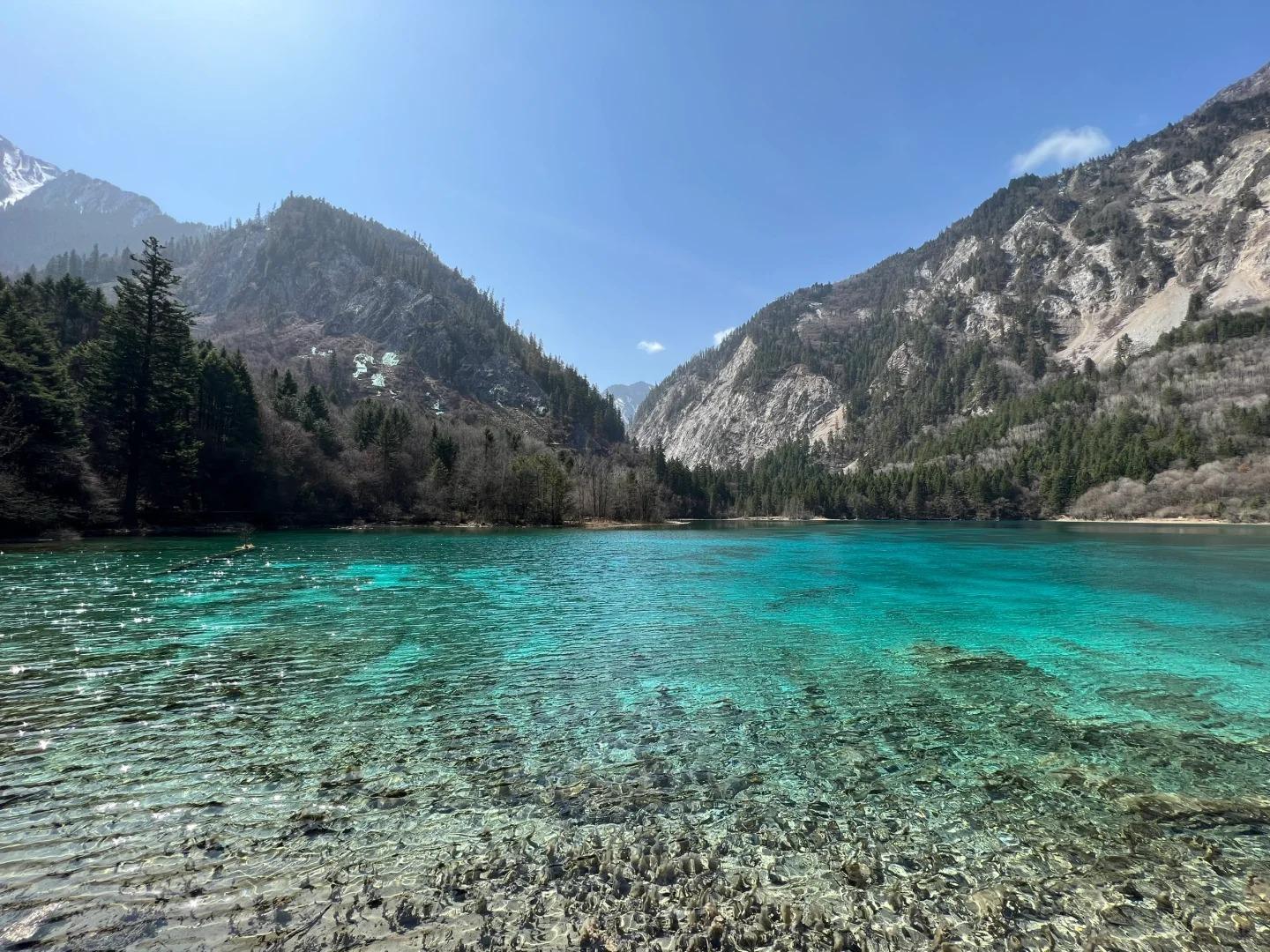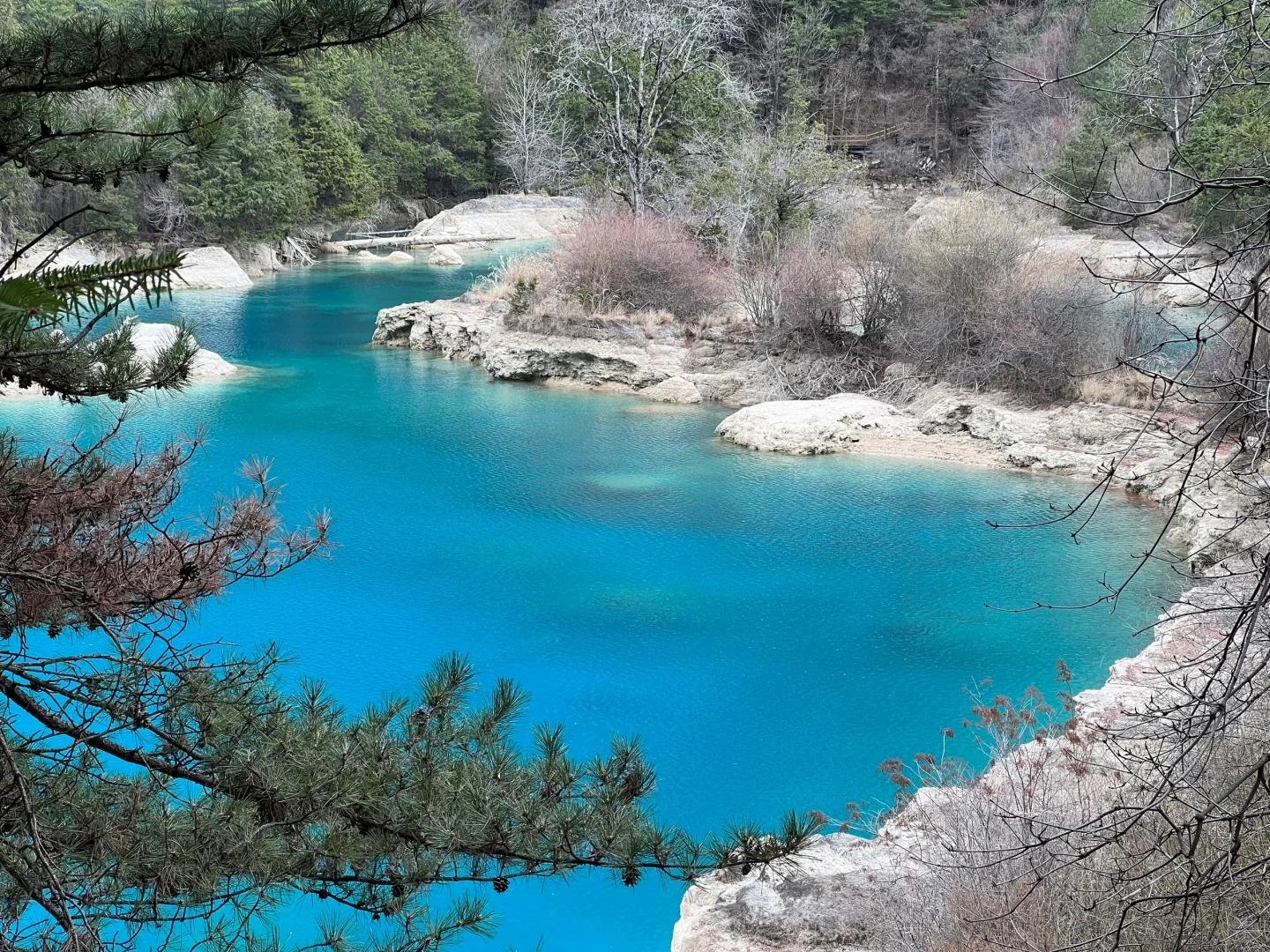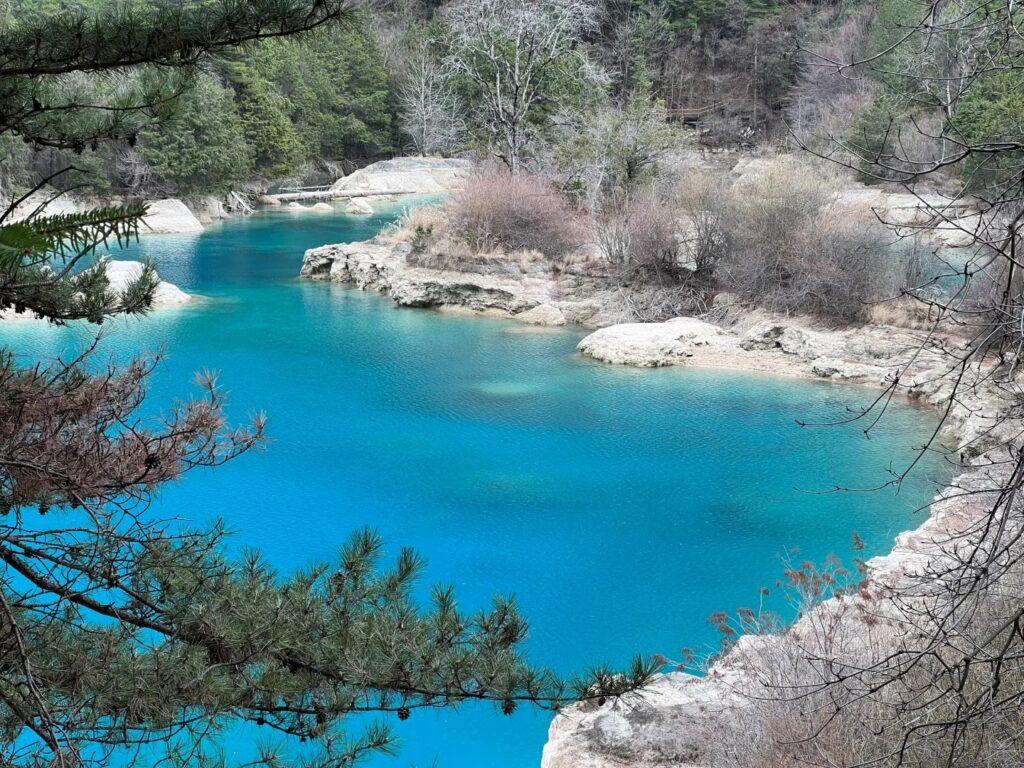Visiting Information
| Information | Details |
|---|---|
| Chinese Name | 九寨沟国家公园 (Jiǔzhàigōu Guójiā Gōngyuán) |
| Location and Address | Jiuzhaigou County, Aba Tibetan and Qiang Autonomous Prefecture, Sichuan Province, China |
| Opening Time/Hours | 7:00 AM – 7:00 PM (April to November) 8:00 AM – 6:00 PM (December to March) |
| Entrance Fee | 190 CNY (Peak Season: April to November) 80 CNY (Off-Season: December to March) Additional 90 CNY for eco-friendly shuttle bus (mandatory) |
| How to Get There | By Metro: Not applicable By Bus: Long-distance buses from Chengdu, Mianyang, or Songpan By Taxi: Available from Jiuzhaigou Huanglong Airport (about 1.5 hours) |
| Best Time for Visit | September to November for autumn colors; April to June for lush greenery and flowing waterfalls |
| Contact Info | +86 837 7739753 Email: [email protected] |
Overview
Jiuzhai Valley National Park, located in the north of Sichuan Province, China, is renowned for its stunning natural beauty, featuring colorful lakes, multi-level waterfalls, snow-capped mountains, and diverse wildlife. Recognized as a UNESCO World Heritage Site in 1992, the park spans over 72,000 hectares and is known for its turquoise-blue lakes, formed by calcium carbonate deposits.
Historical Background
The name “Jiuzhai” means “Nine Village Valley,” referring to the nine Tibetan villages that once existed in the area. The region has been inhabited by Tibetan and Qiang peoples for centuries. The park was first discovered by the outside world in 1972 and was established as a national park in 1984. It gained international recognition after being listed as a UNESCO World Heritage Site and has since become one of China’s most popular natural attractions.
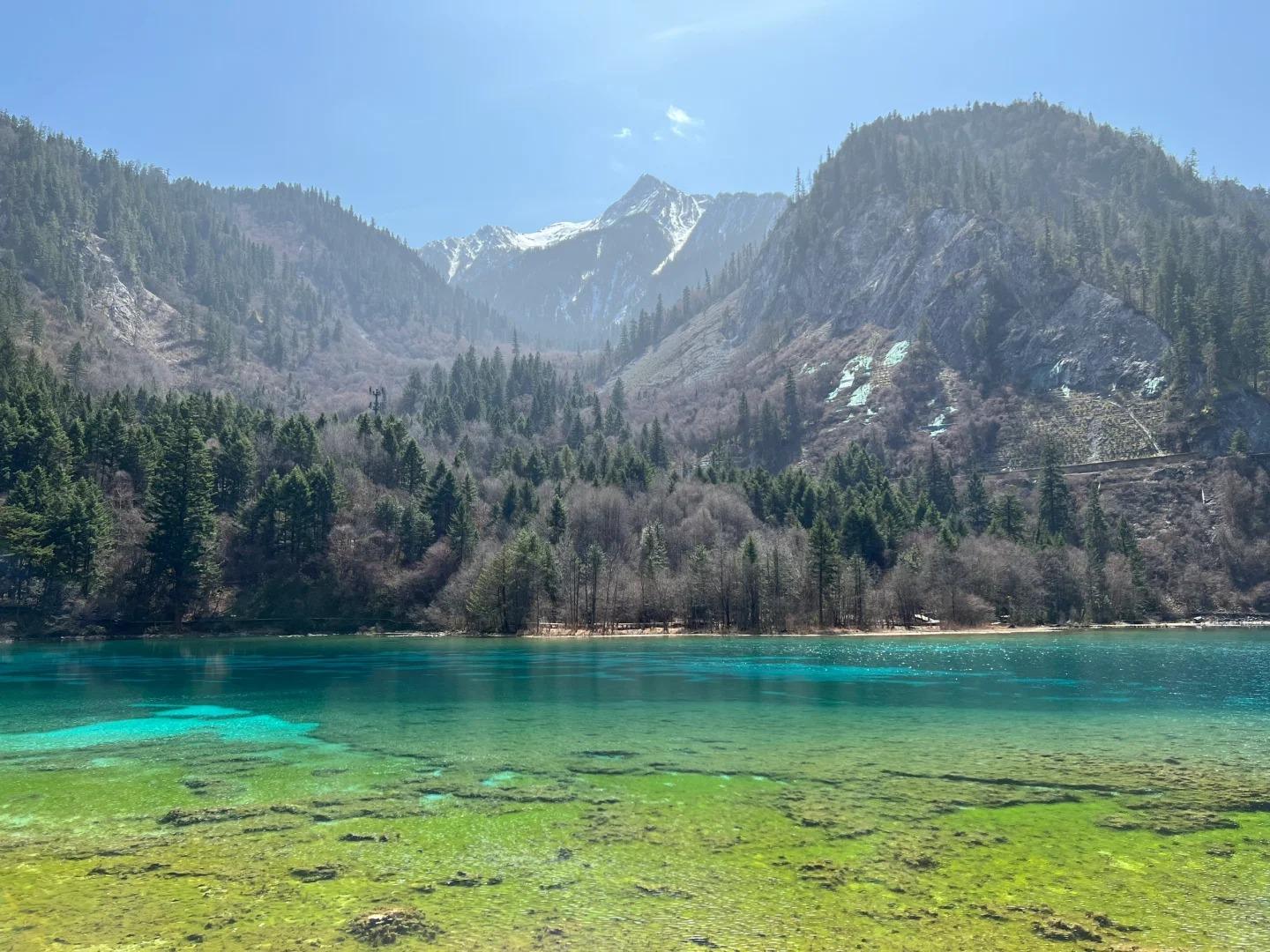
Natural Features
- Colorful Lakes: The park is famous for its 114 lakes of various sizes and colors. The most notable include Five Flower Lake, known for its vibrant blue-green water and submerged ancient tree trunks, and Mirror Lake, which reflects the surrounding mountains like a perfect mirror.
- Waterfalls: Jiuzhai Valley boasts numerous waterfalls, with Pearl Shoal Waterfall and Nuorilang Waterfall being among the most spectacular. These cascades create a mesmerizing interplay of water and light, especially during sunny days.
- Forested Mountains: The park is surrounded by snow-capped mountains and dense forests, home to a variety of flora and fauna, including endangered species like the giant panda and the Sichuan golden snub-nosed monkey.
- Travertine Landscapes: The unique geological formations in the park, particularly the travertine (calcium carbonate) deposits, create stunning terraced lakes and colorful water features.
Cultural Importance
Jiuzhai Valley holds significant cultural importance for the Tibetan and Qiang ethnic groups who have inhabited the region for generations. The park area includes several Tibetan villages, showcasing traditional architecture and customs. The local culture is deeply intertwined with the natural environment, with many sacred sites and legends associated with the lakes and mountains.
Surrounding Attractions
- Huanglong National Park: Located about 100 km from Jiuzhai Valley, this park is famous for its colorful pools formed by calcite deposits, as well as diverse forest ecosystems, snow-capped peaks, and waterfalls.
- Songpan Ancient Town: This historic town, dating back over 2,000 years, is known for its well-preserved city walls, traditional architecture, and as a gateway to the grasslands of the Tibetan Plateau.
- Mounigou Valley: Less crowded than Jiuzhai Valley, this scenic area offers similar landscapes with colorful lakes, waterfalls, and diverse wildlife, providing a more tranquil experience.
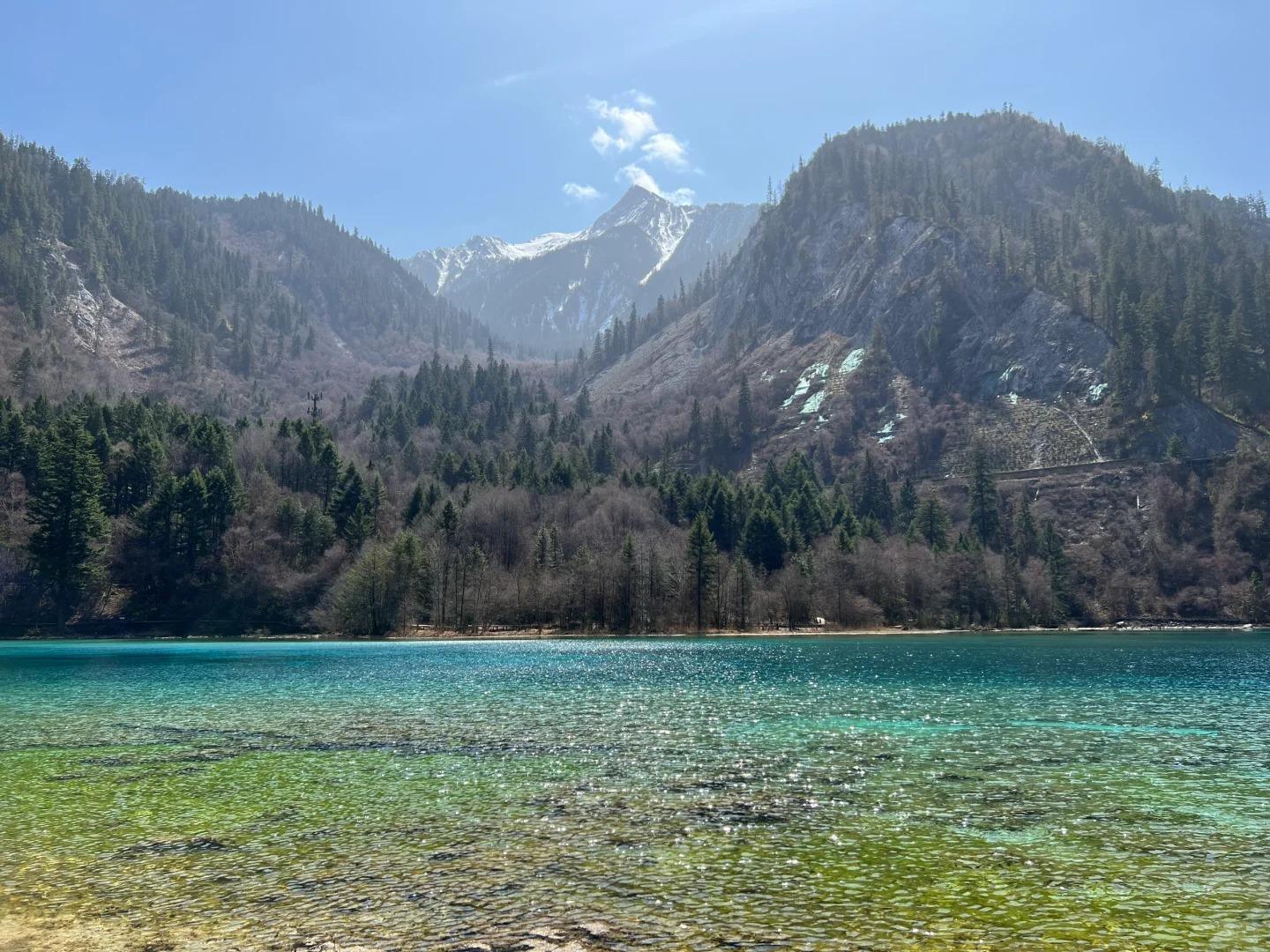
Photography Opportunities
- Five Flower Lake: This multi-colored lake offers stunning photo opportunities, especially in autumn when the surrounding trees add vibrant colors to the scene.
- Nuorilang Waterfall: As the widest waterfall in the park, it provides a majestic backdrop for landscape photography, particularly during the high-water season in summer.
- Long Lake: The highest, largest, and deepest lake in the park, surrounded by snow-capped mountains, offers breathtaking panoramic views and reflections.
- Autumn Scenery: The park is especially photogenic in autumn when the foliage turns golden and red, creating a striking contrast with the blue lakes and waterfalls.
Modern Importance
- Ecological Conservation: The park serves as a crucial protected area for biodiversity conservation, preserving unique ecosystems and endangered species in the region.
- Scientific Research: Jiuzhai Valley provides valuable opportunities for scientific studies in geology, hydrology, and ecology, contributing to our understanding of travertine landscapes and alpine ecosystems.
- Sustainable Tourism: The park has become a model for sustainable ecotourism in China, balancing tourism development with environmental protection and local community benefits.
- Cultural Preservation: By showcasing and preserving Tibetan and Qiang cultures, the park plays a vital role in maintaining the cultural diversity of the region.
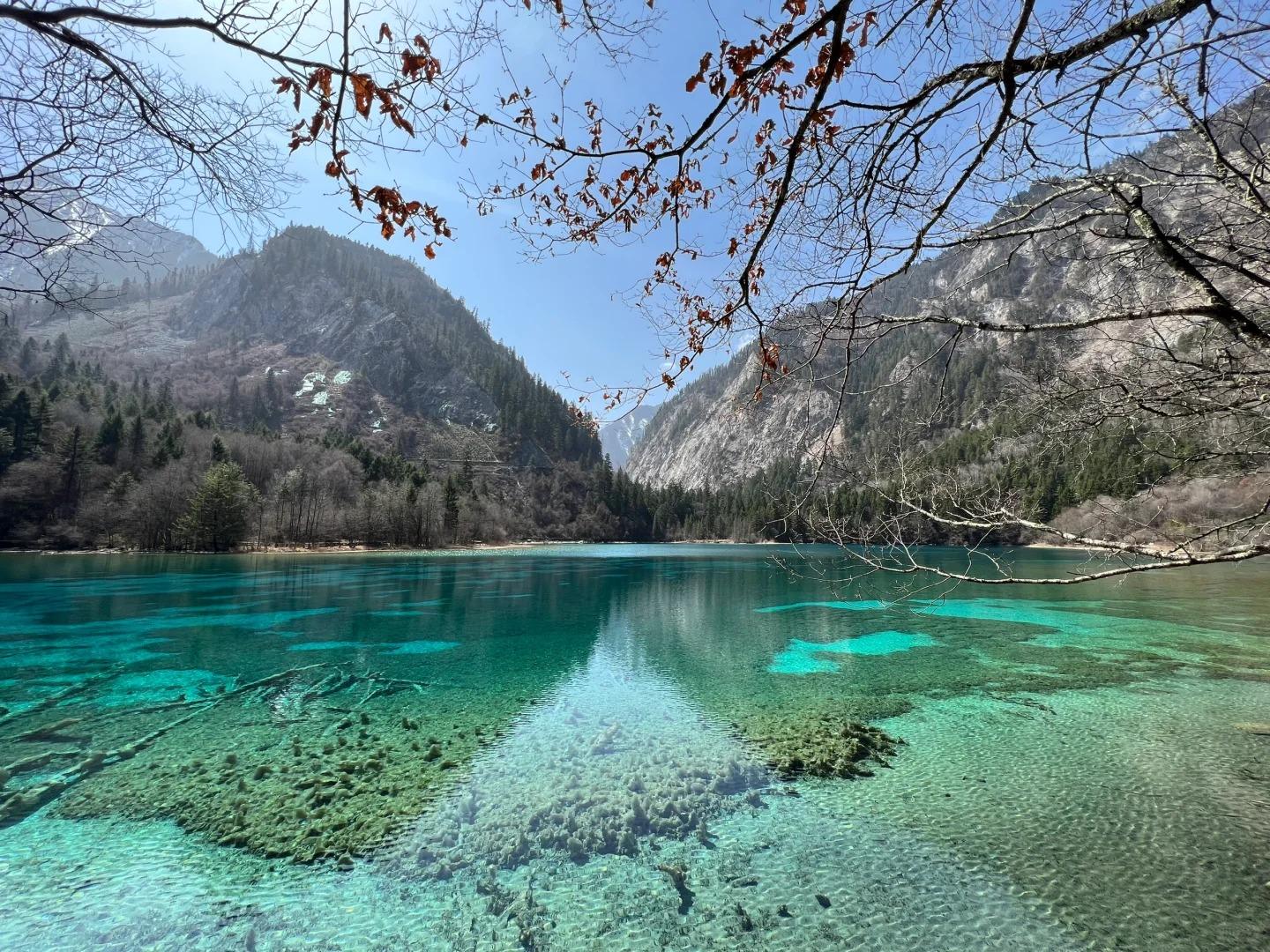
FAQ
- What is Jiuzhai Valley National Park famous for?
Jiuzhai Valley National Park is famous for its stunning colorful lakes, multi-level waterfalls, snow-capped mountains, and diverse wildlife. It’s particularly known for its turquoise-blue waters and vibrant autumn colors. - What’s inside Jiuzhai Valley National Park?
Inside Jiuzhai Valley National Park, visitors can find over 100 colorful lakes, numerous waterfalls, lush forests, snow-capped mountains, and Tibetan villages. Key attractions include Five Flower Lake, Pearl Shoal Waterfall, and Nuorilang Waterfall. - Is Jiuzhai Valley National Park free?
No, Jiuzhai Valley National Park is not free. There is an entrance fee of 190 CNY during peak season (April to November) and 80 CNY during off-season (December to March). An additional 90 CNY is required for the mandatory eco-friendly shuttle bus within the park. - Is Jiuzhai Valley National Park worth visiting?
Yes, Jiuzhai Valley National Park is definitely worth visiting. It offers breathtaking natural scenery, unique geological features, and opportunities to experience Tibetan culture. It’s considered one of China’s most beautiful national parks and a UNESCO World Heritage Site. - What to do in Jiuzhai Valley National Park?
In Jiuzhai Valley National Park, visitors can take scenic walks, ride the eco-friendly buses to various viewpoints, photograph the colorful lakes and waterfalls, observe wildlife, learn about local Tibetan culture, and enjoy the changing scenery throughout different seasons. - How do I get to Jiuzhai Valley National Park in the local city?
The nearest city to Jiuzhai Valley National Park is Chengdu. From Chengdu, you can take a direct flight to Jiuzhai Huanglong Airport (about 1 hour), then take a taxi or shuttle bus to the park entrance (about 1.5 hours). Alternatively, long-distance buses are available from Chengdu to Jiuzhaigou, which take about 8-10 hours. - How to visit Jiuzhai Valley National Park?
To visit Jiuzhai Valley National Park, it’s recommended to book tickets in advance, especially during peak season. Start early in the day, use the eco-friendly shuttle buses to move between scenic spots, and follow the designated paths. A typical visit takes 1-2 full days. Consider hiring a guide for more in-depth information about the park’s features and ecology. Remember to respect the environment and local customs during your visit.


